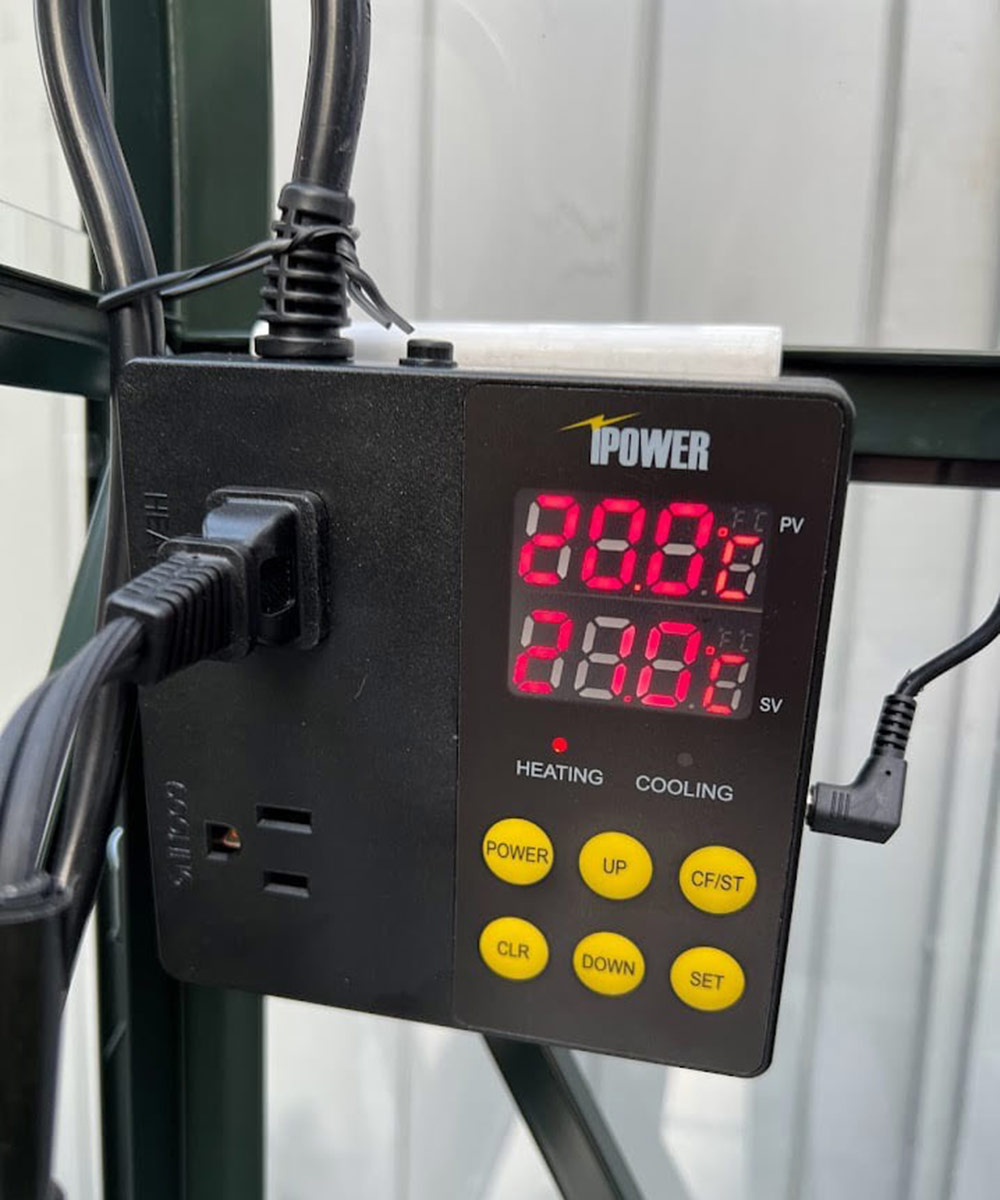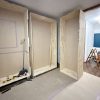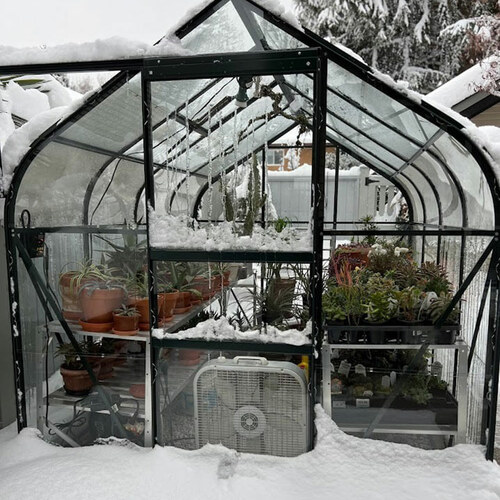
Happy Friday GPODers!
We’re back in Richmond, British Columbia to continue Cherry Ong’s series on her garden transformation and greenhouse build. Last week Cherry gave us all of the dirty details of what it takes to build one these prefabricated greenhouses, and today she’s giving helpful advice on what some might find the most fascinating part of this process: all of the bells and whistles that actually make these structures the ideal place to grow any plant you desire. From a fancy thermometer that gives you detailed readings via bluetooth and an app to an old-fashion box fan for additional circulation, these are the accessories that Cherry utilizes for successful greenhouse growing.
And if you’ve missed any previous installments of this series, check them out here: Part 1, Part 2, and Part 3.
Greenhouse Accessories and Add Ons
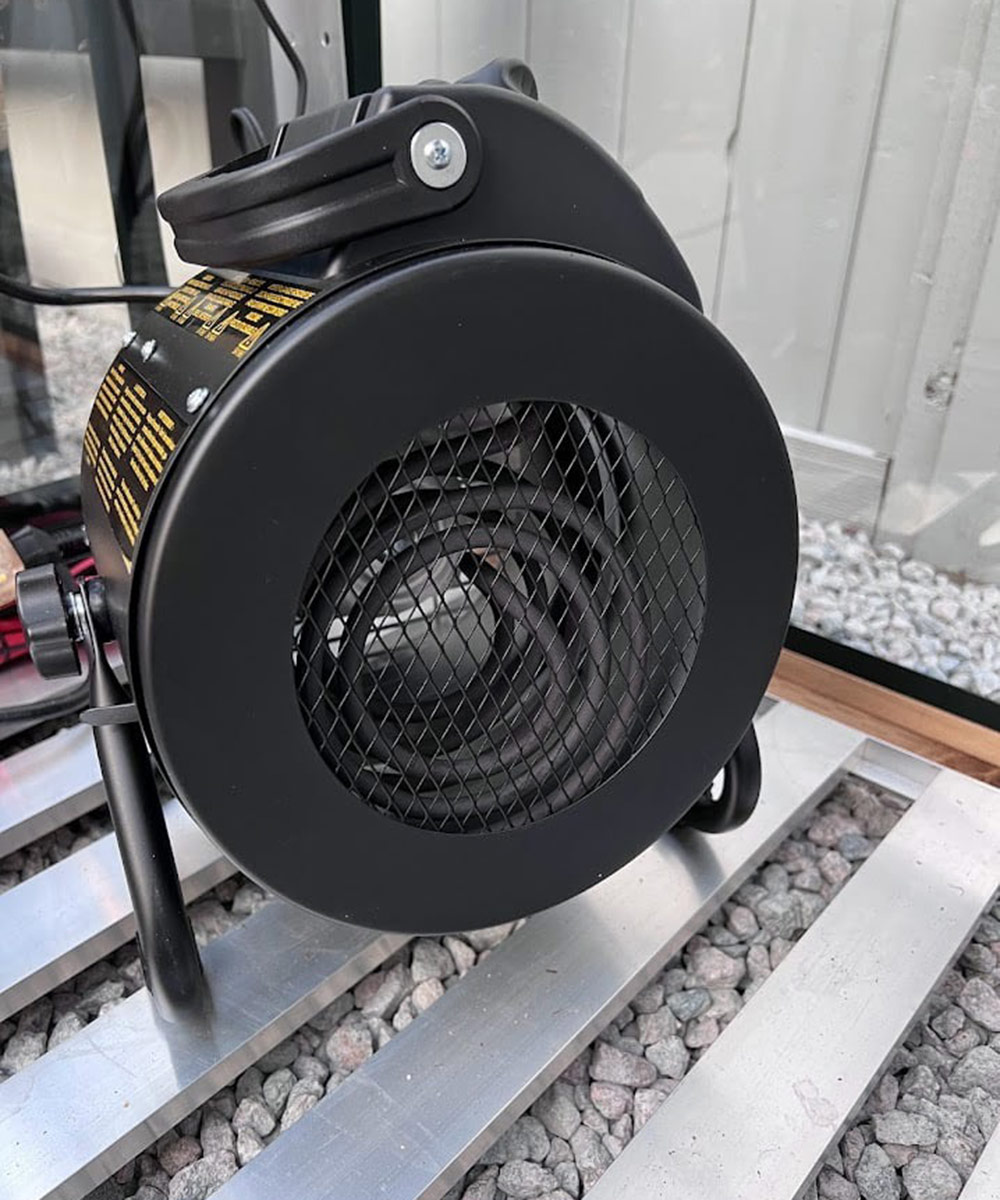 Electric Heater: We purchased this Forced Air Greenhouse Heater with Fan from Amazon (iPower Electric Heater Fan with Digital Cooling Thermostat Controller for Greenhouse). It has overheat protection wherein once the desired temperature is reached, the heater will automatically shut off. Since the greenhouse mainly stores succulents, we have set the desired temperature to 14°C/57°F. The heater is lightweight and portable. It sits on the greenhouse floor and fits under one of the plant stands (we switched the plant stands after this photo was taken). It has a high accuracy thermostat controller, is waterproof and can quickly heat up small spaces.
Electric Heater: We purchased this Forced Air Greenhouse Heater with Fan from Amazon (iPower Electric Heater Fan with Digital Cooling Thermostat Controller for Greenhouse). It has overheat protection wherein once the desired temperature is reached, the heater will automatically shut off. Since the greenhouse mainly stores succulents, we have set the desired temperature to 14°C/57°F. The heater is lightweight and portable. It sits on the greenhouse floor and fits under one of the plant stands (we switched the plant stands after this photo was taken). It has a high accuracy thermostat controller, is waterproof and can quickly heat up small spaces.
Extension Cord and Timer
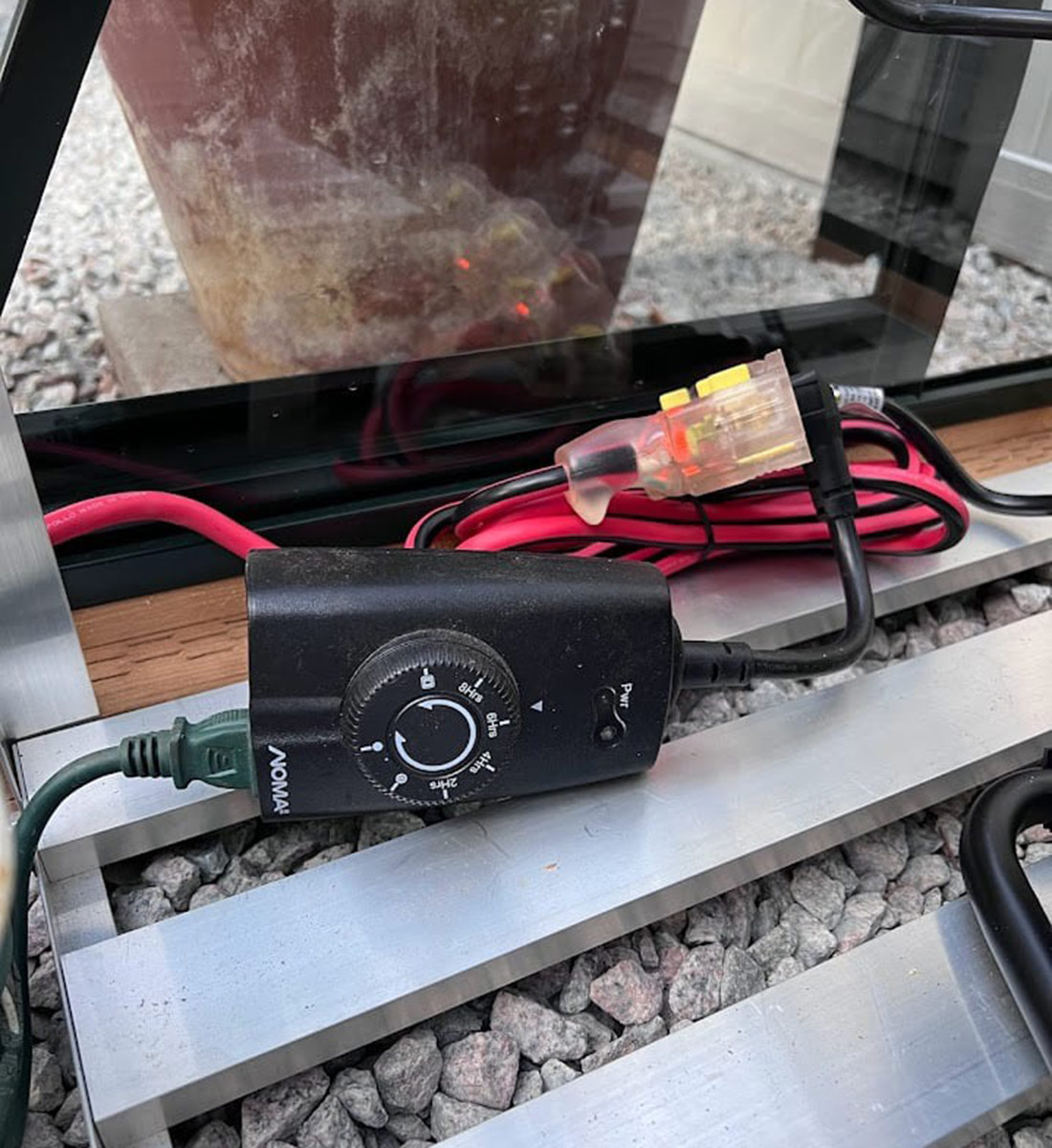 An outdoor extension cord is connected to an outlet from the main house. The cord was ran through under the gravel and greenhouse base to supply electricity for the heater and the lights. A photocell timer was also added for the lights. It turns on at dusk and you can set the turn off time anywhere from 2 hours to 8 hours later in 2 hour intervals.
An outdoor extension cord is connected to an outlet from the main house. The cord was ran through under the gravel and greenhouse base to supply electricity for the heater and the lights. A photocell timer was also added for the lights. It turns on at dusk and you can set the turn off time anywhere from 2 hours to 8 hours later in 2 hour intervals.
Hygrometer Thermometer
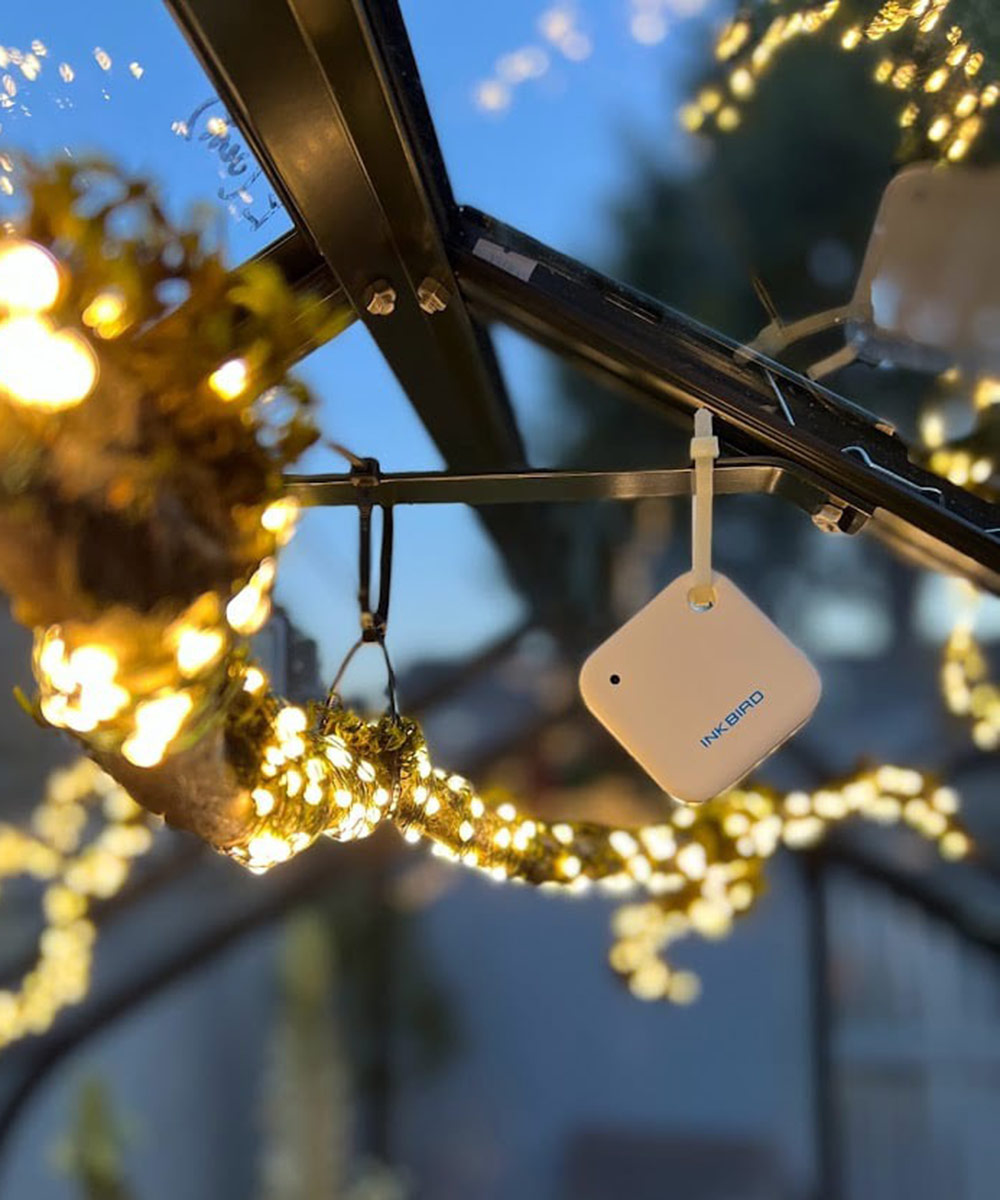 We also picked up an Inkbird IBS-TH2 Bluetooth Thermometer & Hygrometer from Amazon. It is a built in temperature and humidity sensor which connects via Bluetooth. One mobile phone can monitor more than one sensor, and one sensor can be monitored by more than one mobile phone.
We also picked up an Inkbird IBS-TH2 Bluetooth Thermometer & Hygrometer from Amazon. It is a built in temperature and humidity sensor which connects via Bluetooth. One mobile phone can monitor more than one sensor, and one sensor can be monitored by more than one mobile phone.
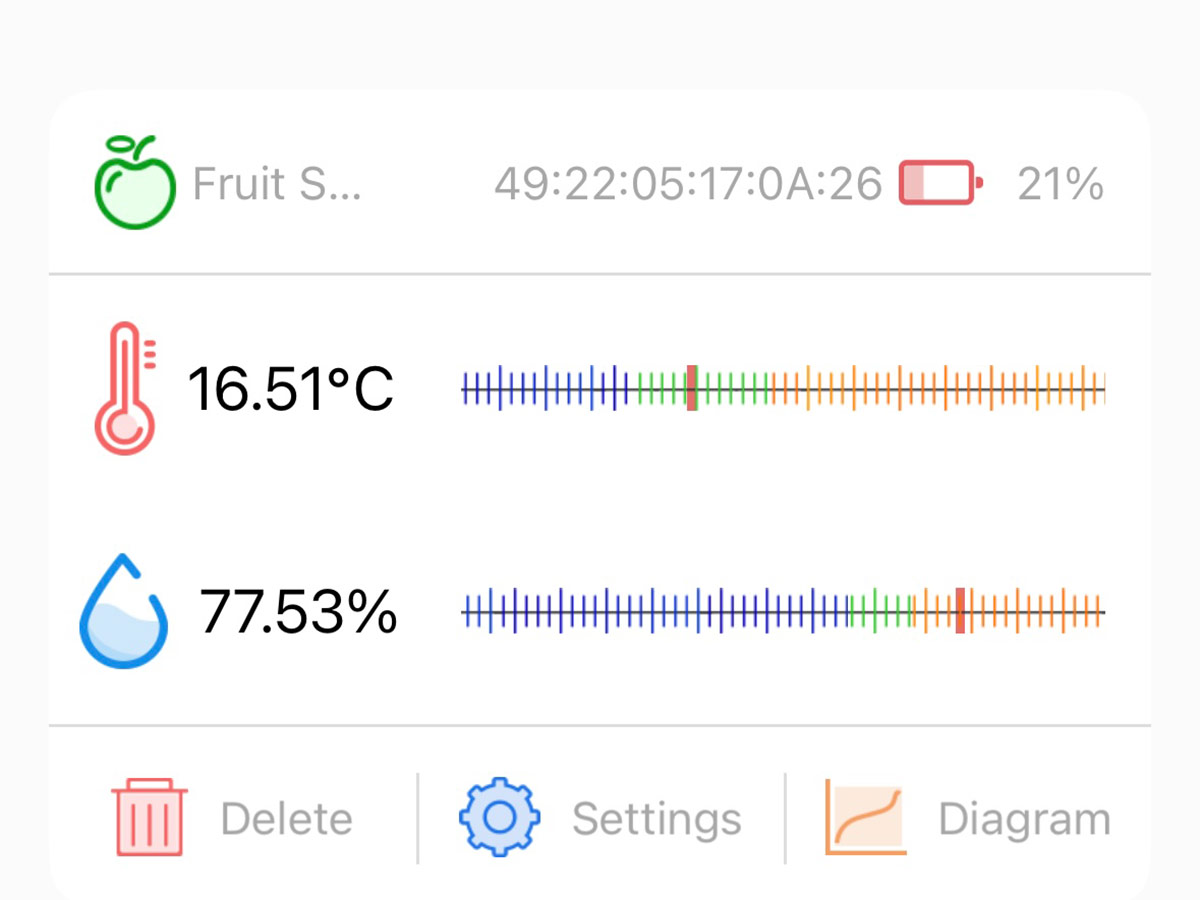 The reports appear as such on the cell phone. The device is waterproof, cold resistant and rust proof. It is battery operated and battery life can be monitored through the app. One can add a WiFi gateway to the device for data and alerts via the internet, but so far I have not opted for this for the following reason: if there is alert and we are not home, there is nothing we can do to correct the situation in the greenhouse. Anticipating the weather and preparing in advance would be the best prevention for greenhouse alerts.
The reports appear as such on the cell phone. The device is waterproof, cold resistant and rust proof. It is battery operated and battery life can be monitored through the app. One can add a WiFi gateway to the device for data and alerts via the internet, but so far I have not opted for this for the following reason: if there is alert and we are not home, there is nothing we can do to correct the situation in the greenhouse. Anticipating the weather and preparing in advance would be the best prevention for greenhouse alerts.
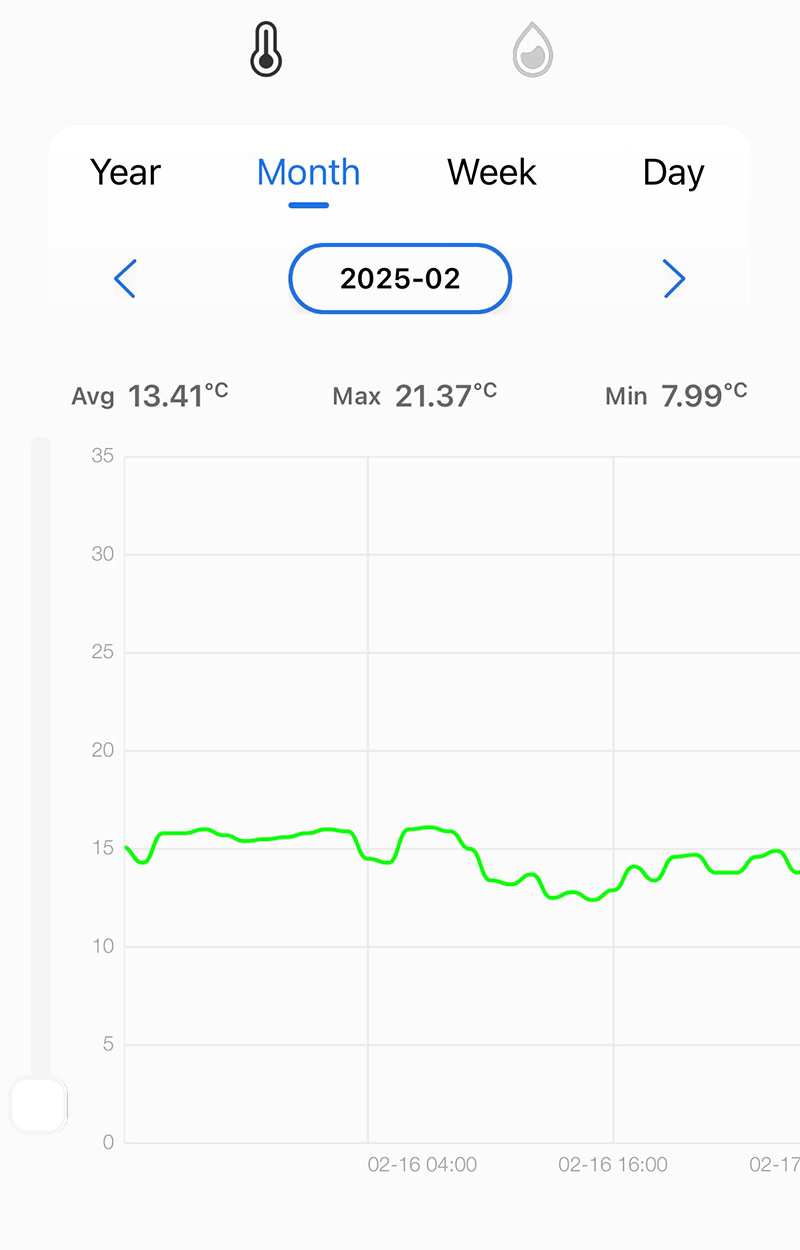 Temperature distribution chart from the Inkbird
Temperature distribution chart from the Inkbird
Lighting
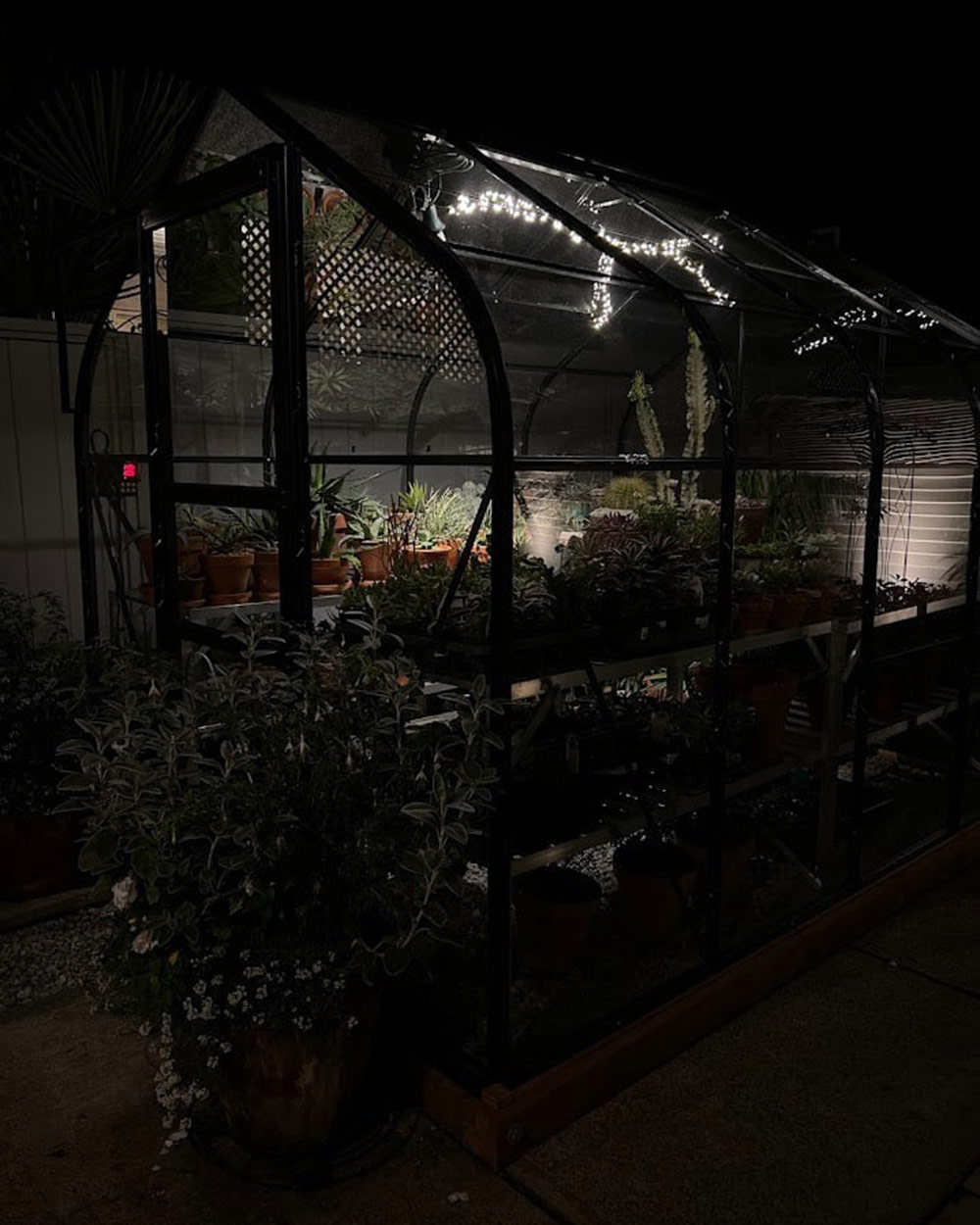 Hubby added a spot light for inside the greenhouse right after installation, but I wanted to add something pretty. I love the way the Europeans decorate their greenhouses with a chandelier. Our greenhouse has a lower ceiling with not much room for one, so we got creative and strung a long mossy branch with electric LED fairy lights and hung the lit branch with zip ties.
Hubby added a spot light for inside the greenhouse right after installation, but I wanted to add something pretty. I love the way the Europeans decorate their greenhouses with a chandelier. Our greenhouse has a lower ceiling with not much room for one, so we got creative and strung a long mossy branch with electric LED fairy lights and hung the lit branch with zip ties.
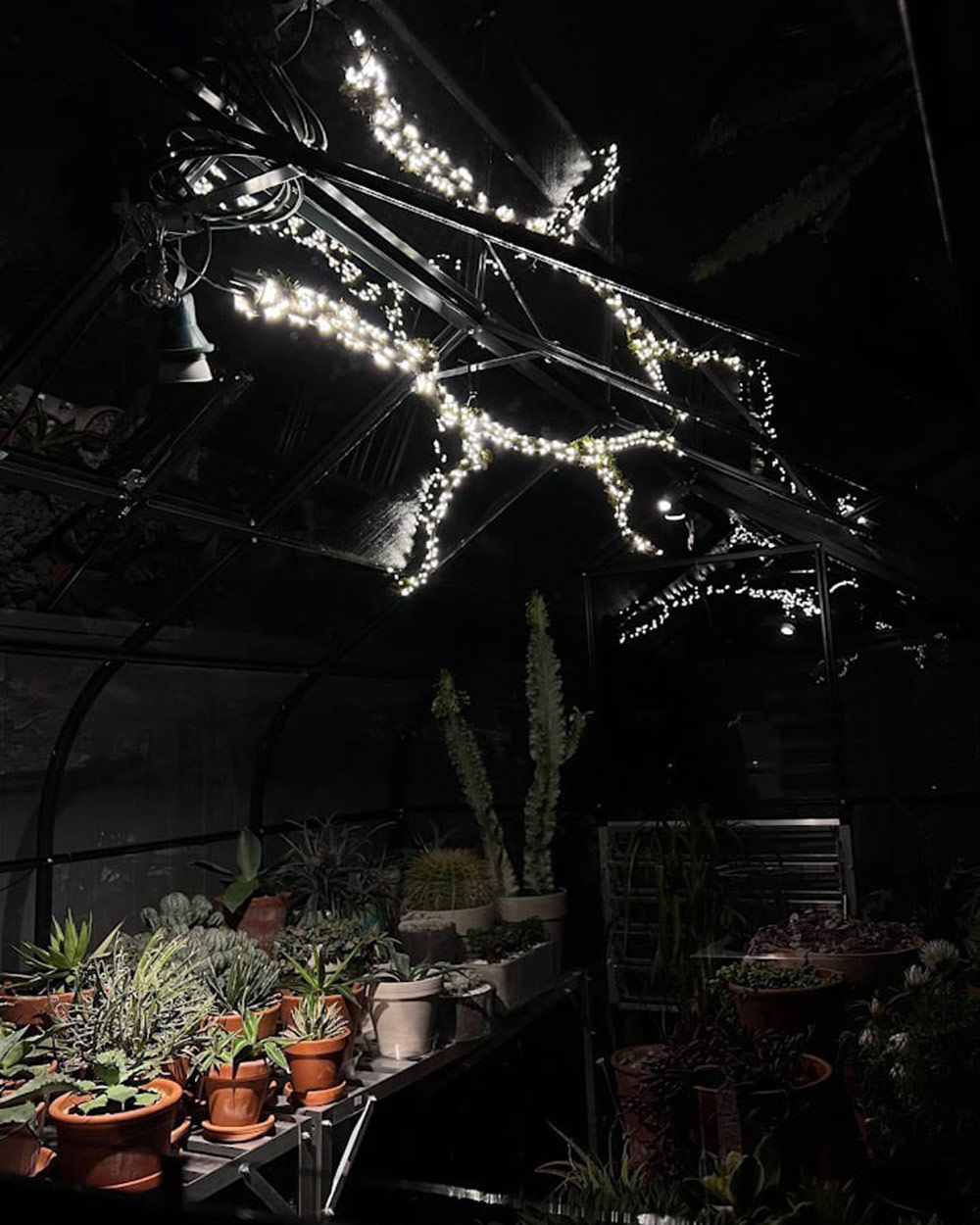 I know it won’t last forever so hopefully we will come up with another creative solution when the time comes.
I know it won’t last forever so hopefully we will come up with another creative solution when the time comes.
Fan
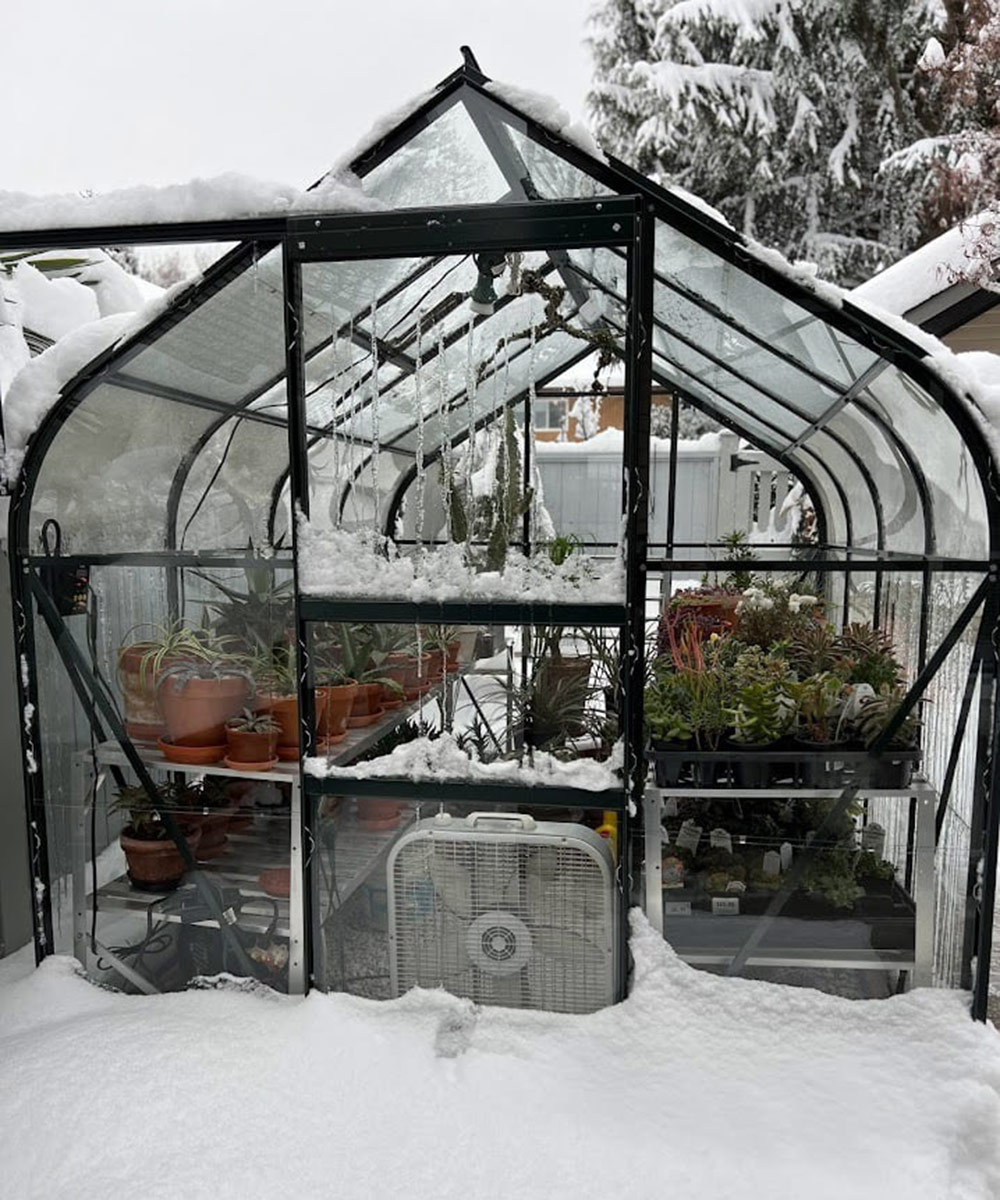 For additional air circulation, we use an old box fan on a timer connected to the timer. The fan automatically turns on when the temperatures ≥ 14°C/57°F.
For additional air circulation, we use an old box fan on a timer connected to the timer. The fan automatically turns on when the temperatures ≥ 14°C/57°F.
With all of these accessories in place, the greenhouse is equipped to house some of Cherry’s most precious and sensitive plants. However, there are a few more things that have made greenhouse growing that much easier. Next week we will cover more accessories, an upgrade that was made in the summer, and the flooring that was installed to make standing in the greenhouse a little easier.
I hope everyone has a great weekend! And if you’re planning on starting some spring projects or garden transformations this weekend, remember to take a good “before” photo as well as some photos along the way to track your progress. These can be helpful as you work on this project and as you reflect on your garden in future seasons, and can be super fun to share with the blog 😉 Follow the directions below to submit your garden photos via email, or send me a DM on Instagram: @agirlherdogandtheroad.
Have a garden you’d like to share?
Have photos to share? We’d love to see your garden, a particular collection of plants you love, or a wonderful garden you had the chance to visit!
To submit, send 5-10 photos to [email protected] along with some information about the plants in the pictures and where you took the photos. We’d love to hear where you are located, how long you’ve been gardening, successes you are proud of, failures you learned from, hopes for the future, favorite plants, or funny stories from your garden.
Have a mobile phone? Tag your photos on Facebook, Instagram or Twitter with #FineGardening!
Do you receive the GPOD by email yet? Sign up here.
Fine Gardening Recommended Products
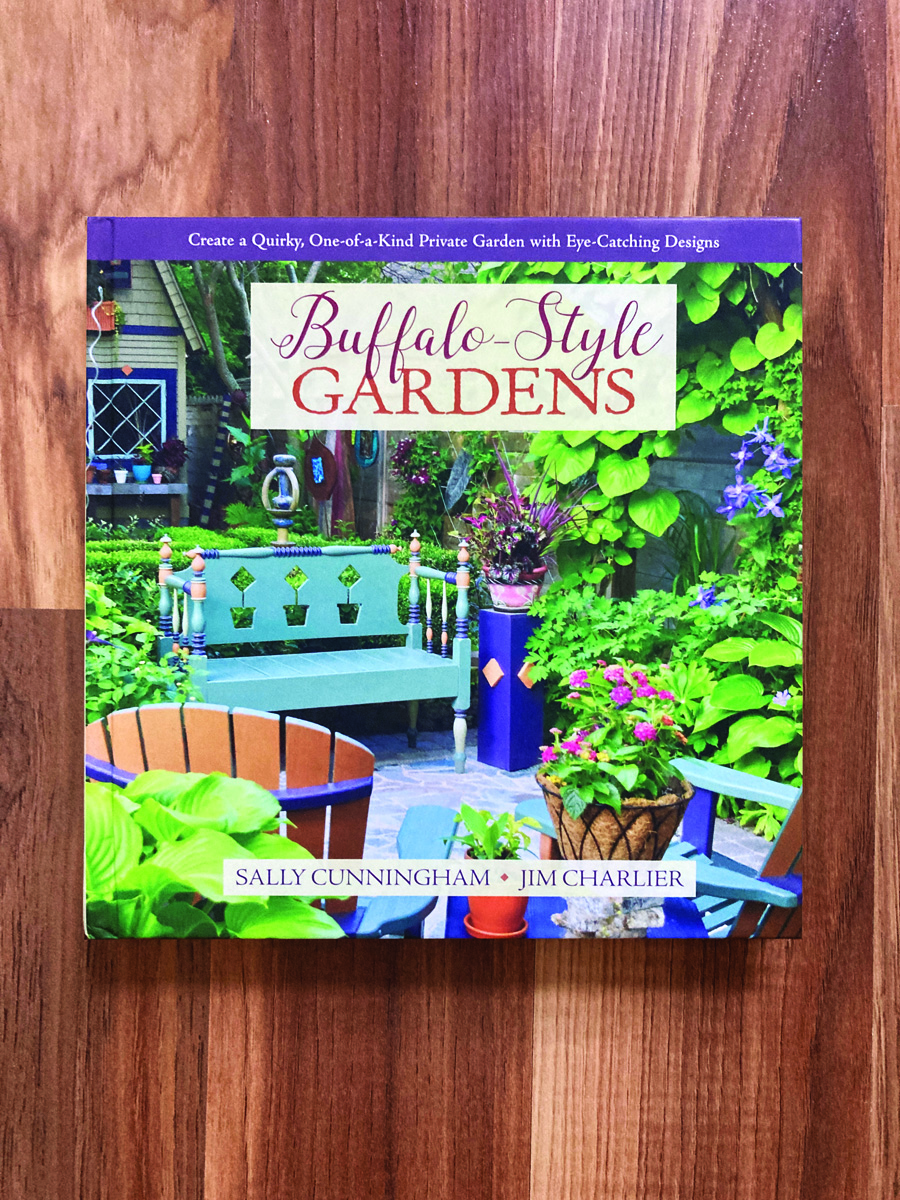
Buffalo-Style Gardens: Create a Quirky, One-of-a-Kind Private Garden with Eye-Catching Designs
Fine Gardening receives a commission for items purchased through links on this site, including Amazon Associates and other affiliate advertising programs.
Buffalo-Style Gardens is a one-of-a-kind, offbeat garden design book that showcases the wildly inventive gardens and gardeners of Buffalo – and offers readers “the best of the best” ideas to use in their own small-space gardens.
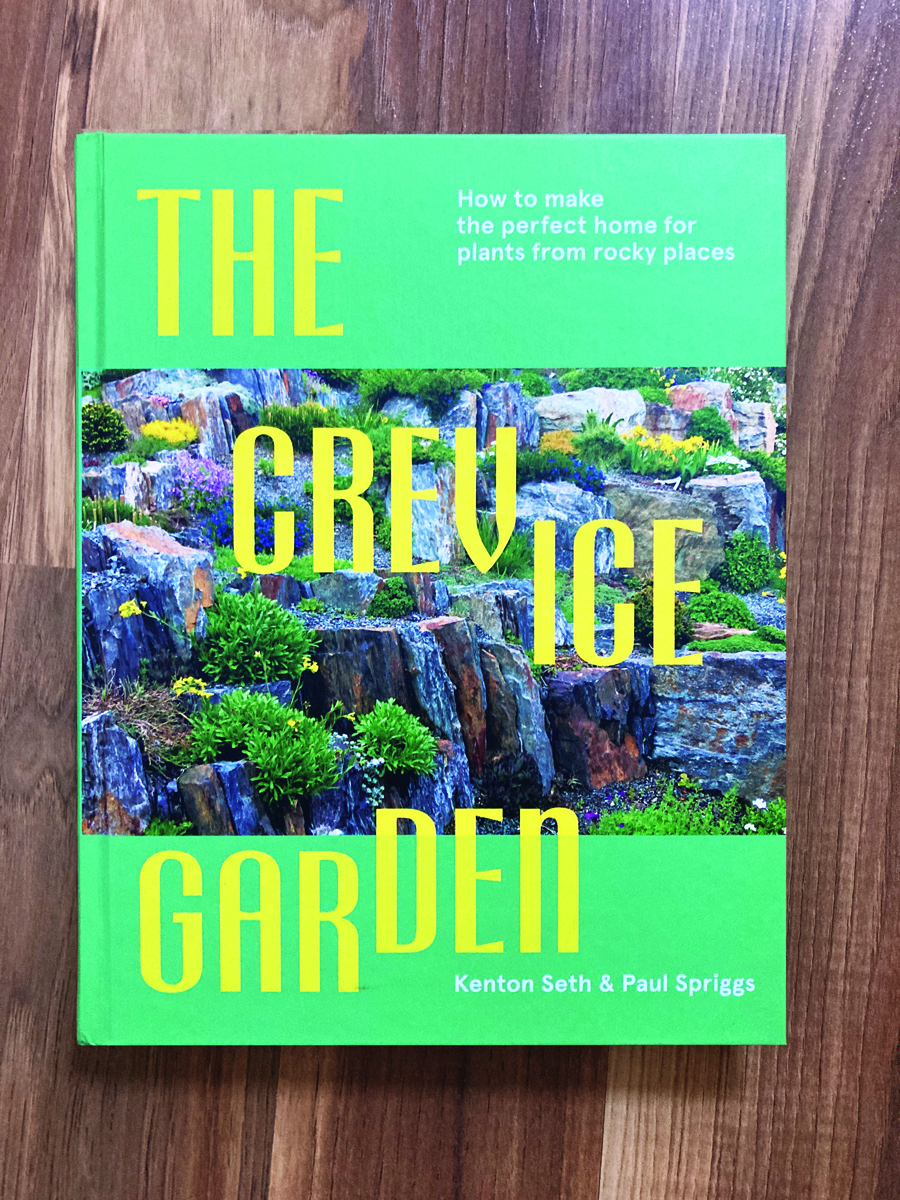
The Crevice Garden: How to make the perfect home for plants from rocky places
Fine Gardening receives a commission for items purchased through links on this site, including Amazon Associates and other affiliate advertising programs.
A crevice garden replicates the environmental conditions of mountain tops, deserts, coastlines, and other exposed or rocky places on earth. These striking garden features provide perfect conditions for the plants native to these far-off places, bringing the cultivation of these precious gems within everybody’s reach.
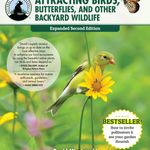
National Wildlife Federation®: Attracting Birds, Butterflies, and Other Backyard Wildlife, Expanded Second Edition (Creative Homeowner) 17 Projects & Step-by-Step Instructions to Give Back to Nature
Fine Gardening receives a commission for items purchased through links on this site, including Amazon Associates and other affiliate advertising programs.
From the National Wildlife Federation, the largest U.S. nonprofit conservation organization, with 6 million members and 51 state and territorial affiliated organizations. 17 step-by-step projects that everyone can do together make getting your family back to nature easy, educational, and fun. Over 200 color photos of backyard wildlife habitats and the wide variety of creatures they attract, plus step-by-step photos and illustrations for family projects. Learn wildlife-friendly practices for gardening, landscape design, supplemental feeders, birdbaths, nesting places, and more. Learn how to attract backyard pollinators, from bees and butterflies to beetles, bats, and hummingbirds
Get your garden certified by the National Wildlife Federation’s Garden for Wildlife(TM) program by following the included certification application checklist.

